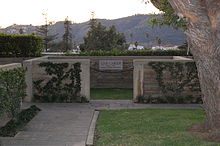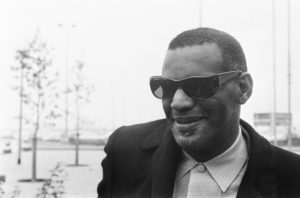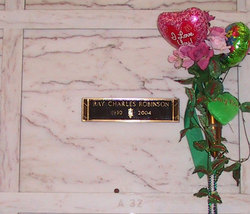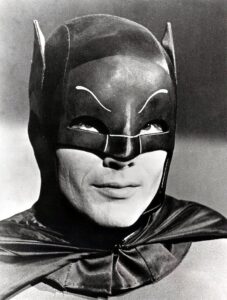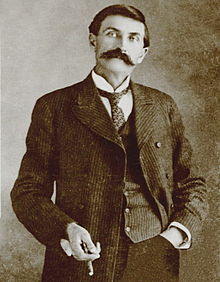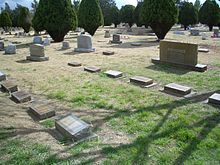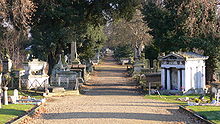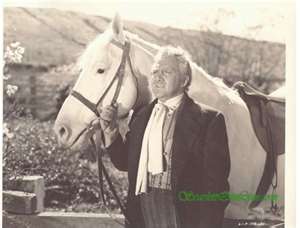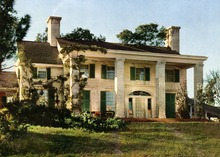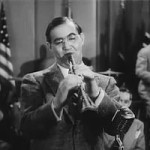 On this day in 1986, American jazz and swing musician, clarinetist and bandleader; widely known as the “King of Swing”, Benny Goodman died from a heart attack in New York City at the age of 77, in his home at Manhattan House, 200 East 66th Street. Born Benjamin David Goodman on 30 May 1909 in Chicago.
On this day in 1986, American jazz and swing musician, clarinetist and bandleader; widely known as the “King of Swing”, Benny Goodman died from a heart attack in New York City at the age of 77, in his home at Manhattan House, 200 East 66th Street. Born Benjamin David Goodman on 30 May 1909 in Chicago.
In the mid-1930s, Goodman led one of the most popular musical groups in the United States. His concert at Carnegie Hall in New York City on January 16, 1938 is described by critic Bruce Eder as “the single most important jazz or popular music concert in history: jazz’s ‘coming out’ party to the world of ‘respectable’ music.”
Goodman’s bands started the careers of many jazz musicians. During an era of racial segregation, he led one of the first integrated jazz groups. He performed nearly to the end of his life while exploring an interest in classical music.
The Final Footprint – Goodman is interred in the Long Ridge Cemetery, Stamford, Connecticut.
#RIP #OTD in 1987 actress (Hondo, Sweet Bird of Youth, What Ever Happened to Aunt Alice?, The Beguiled, The Pope of Greenwich Village, The Trip to Bountiful) Geraldine Page died from a heart attack at her home in Manhattan, aged 62. Cremation
 On this day in 1993, American World War II pilot and later, one of the original NASA Mercury Seven astronauts, Deke Slayton died of a brain tumor in League City, Texas at the age of 69. Born Donald Kent Slayton on 1 March 1924 in Sparta, Wisconsin. He was portrayed in the movie The Right Stuff (1983) by Scott Paulin. The original seven Mercury astronauts included Alan Shepard, Virgil Ivan “Gus” Grissom, John Herschel Glenn, Jr., Malcolm Scott Carpenter, Walter Marty “Wally” Schirra, Jr., and Leroy Gordon Cooper, Jr. The film is based on the book by Tom Wolfe, and also featured; Sam Shepard as Chuck Yeager, Ed Harris as John Glenn, Dennis Quaid as Gordon Cooper, Fred Ward as Gus Grissom, Charles Frank as Scott Carpenter and Lance Henriksen as Wally Shirra. The Final Footprint – Slayton was cremated and his cremains were scattered over the Slayton family farm in Wisconsin.
On this day in 1993, American World War II pilot and later, one of the original NASA Mercury Seven astronauts, Deke Slayton died of a brain tumor in League City, Texas at the age of 69. Born Donald Kent Slayton on 1 March 1924 in Sparta, Wisconsin. He was portrayed in the movie The Right Stuff (1983) by Scott Paulin. The original seven Mercury astronauts included Alan Shepard, Virgil Ivan “Gus” Grissom, John Herschel Glenn, Jr., Malcolm Scott Carpenter, Walter Marty “Wally” Schirra, Jr., and Leroy Gordon Cooper, Jr. The film is based on the book by Tom Wolfe, and also featured; Sam Shepard as Chuck Yeager, Ed Harris as John Glenn, Dennis Quaid as Gordon Cooper, Fred Ward as Gus Grissom, Charles Frank as Scott Carpenter and Lance Henriksen as Wally Shirra. The Final Footprint – Slayton was cremated and his cremains were scattered over the Slayton family farm in Wisconsin.
 On this day in 2008, American television journalist and lawyer who appeared for more than 16 years as the longest-serving moderator of NBC’s Meet the Press, Tim Russert died from a heart attack in Washington D.C. at the age of 58. Born Timothy John Russert on 7 May 1950 in Buffalo, New York.
On this day in 2008, American television journalist and lawyer who appeared for more than 16 years as the longest-serving moderator of NBC’s Meet the Press, Tim Russert died from a heart attack in Washington D.C. at the age of 58. Born Timothy John Russert on 7 May 1950 in Buffalo, New York.
The Final Footprint – Russert is buried at Rock Creek Cemetery, next to the historic Soldiers’ Home, in Washington’s Petworth neighborhood. Other notable final footprints at Rock Creek include; Upton Sinclair and Gore Vidal.
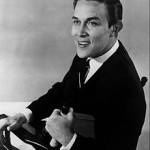 On this day in 2010, American country music singer, television host, actor and businessman, Jimmy Dean died at the age of 81 of natural causes at his home in Varina, Virginia. Born Jimmy Ray Dean on 10 August 1928 in Olton, Texas.
On this day in 2010, American country music singer, television host, actor and businessman, Jimmy Dean died at the age of 81 of natural causes at his home in Varina, Virginia. Born Jimmy Ray Dean on 10 August 1928 in Olton, Texas.
He was the creator of the Jimmy Dean sausage brand as well as the spokesman for its TV commercials. He became a national television personality starting on CBS in 1957. He rose to fame for his 1961 country music crossover hit into rock and roll with “Big Bad John” and his 1963 television series The Jimmy Dean Show, which gave puppeteer Jim Henson his first national media exposure. His acting career included appearing in the early seasons in the Daniel Boone TV series as the sidekick of the famous frontiersman played by star Fess Parker. Later he was on the big screen in a supporting role as billionaire Willard Whyte in the James Bond movie Diamonds Are Forever (1971).
The Final Footprint – He was entombed in a 9-foot-tall (2.7 m) piano-shaped mausoleum overlooking the James River on the grounds of his estate. His epitaph reads “Here Lies One Hell of a Man”, a quote from a lyric from his uncensored version of the Dean and Roy Acuff song, “Big Bad John”.
#RIP #OTD in 2017 Italian actress, artist, model, style icon and “It Girl” of the 1960s and 1970s, muse of The Rolling Stones, Anita Pallenberg died, aged 75, due to complications from hepatitis C. Cremation
#RIP #OTD in 2021 actor (Deliverance, All the President’s Men, Network, Superman) Ned Beatty died at his home in Los Angeles, aged of 83. Cremation
#RIP #OTD in 2023 Pulitzer Prize-winning novelist (The Road; All the Pretty Horses; No Country for Old Men) Cormac McCarthy died at his home in Santa Fe at the age of 89
Have you planned yours yet?
Follow TFF on twitter @RIPTFF

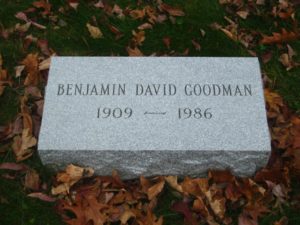
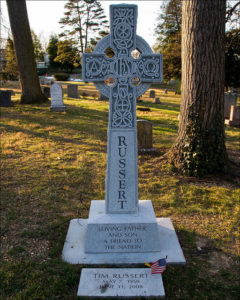
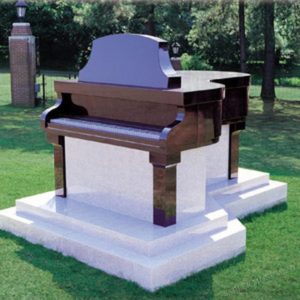
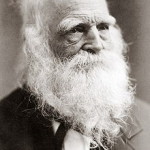 On this day in 1878, American romantic poet, journalist, and long-time editor of the New York Evening Post, William Cullen Bryant died at the age of 83 of complications from an accidental fall suffered after participating in a Central Park ceremony honoring Italian patriot Giuseppe Mazzini. Born 3 November 1794 in a log cabin near Cummington, Massachusetts. Perhaps best known for his poem “Thanatopsis”. The title is from the Greek thanatos (“death”) and opsis (“sight”); it has often been translated as “Meditation upon Death”.
On this day in 1878, American romantic poet, journalist, and long-time editor of the New York Evening Post, William Cullen Bryant died at the age of 83 of complications from an accidental fall suffered after participating in a Central Park ceremony honoring Italian patriot Giuseppe Mazzini. Born 3 November 1794 in a log cabin near Cummington, Massachusetts. Perhaps best known for his poem “Thanatopsis”. The title is from the Greek thanatos (“death”) and opsis (“sight”); it has often been translated as “Meditation upon Death”.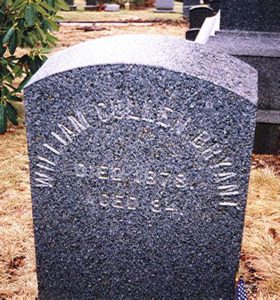
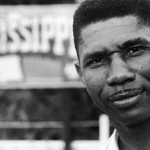 On this day in 1963, African American civil rights activist from Mississippi involved in efforts to overturn segregation at the University of Mississippi, Medgar Evers was assassinated by gunshot in front of his home in Jackson, Mississippi. He was 37 years old. Born Medgar Wiley Evers on 2 July 1925 in Decatur, Mississippi.
On this day in 1963, African American civil rights activist from Mississippi involved in efforts to overturn segregation at the University of Mississippi, Medgar Evers was assassinated by gunshot in front of his home in Jackson, Mississippi. He was 37 years old. Born Medgar Wiley Evers on 2 July 1925 in Decatur, Mississippi.
 On this day in 1994, Nicole Brown Simpson and her friend Ron Goldman were stabbed to death in front of her home 875 South Bundy Drive, Brentwood, Los Angeles, at the ages of 35 and 25 respectively. Nicole Brown was born 19 May 1959 in Frankfurt, West Germany. Ronald Lyle Goldman was born 2 July 1968 in Cook County, Illinois.
On this day in 1994, Nicole Brown Simpson and her friend Ron Goldman were stabbed to death in front of her home 875 South Bundy Drive, Brentwood, Los Angeles, at the ages of 35 and 25 respectively. Nicole Brown was born 19 May 1959 in Frankfurt, West Germany. Ronald Lyle Goldman was born 2 July 1968 in Cook County, Illinois.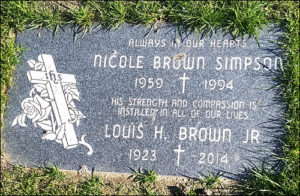
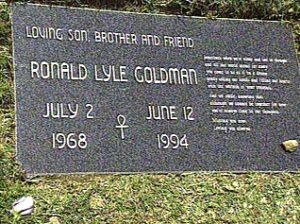 Valley Oaks Memorial Park in Westlake Village, California. O. J. Simpson was tried for the murders of both his ex-wife and Goldman. In October 1995, after a public trial that lasted nearly nine months, Simpson was acquitted of both murders. In a 1997 civil trial, a jury found Simpson liable for the wrongful death of Goldman and awarded $33 million (USD) in damages to the Goldman family. The rights to O. J. Simpson’s book, If I Did It, a first-person account of how he would have committed the murders, had he committed them, were awarded to the Goldman family in August 2007. The family was granted the proceeds from the book in 2007 as part of the
Valley Oaks Memorial Park in Westlake Village, California. O. J. Simpson was tried for the murders of both his ex-wife and Goldman. In October 1995, after a public trial that lasted nearly nine months, Simpson was acquitted of both murders. In a 1997 civil trial, a jury found Simpson liable for the wrongful death of Goldman and awarded $33 million (USD) in damages to the Goldman family. The rights to O. J. Simpson’s book, If I Did It, a first-person account of how he would have committed the murders, had he committed them, were awarded to the Goldman family in August 2007. The family was granted the proceeds from the book in 2007 as part of the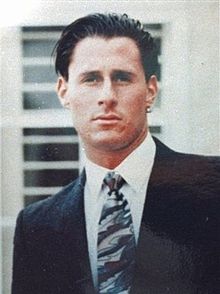 civil jury award against the ex-football star they had been trying to collect for over a decade. The Goldmans own the copyright, media rights and movie rights. They also acquired Simpson’s name, likeness, life story and right of publicity in connection with the book, according to court documents, ensuring Simpson would not be able to profit from the book. After renaming the book If I Did It: Confessions of the Killer, the Goldmans published it in September 2007 through Beaufort Books. The Goldman family contributed a portion of proceeds from the book sale to the newly founded Ron Goldman Foundation for Justice. The foundation provides grants for multiple organizations and programs that provide resources to victims and survivors of violent crimes. In 1994, Nicole Brown’s sister Denise established The Nicole Brown Charitable Foundation to help victims of domestic violence.
civil jury award against the ex-football star they had been trying to collect for over a decade. The Goldmans own the copyright, media rights and movie rights. They also acquired Simpson’s name, likeness, life story and right of publicity in connection with the book, according to court documents, ensuring Simpson would not be able to profit from the book. After renaming the book If I Did It: Confessions of the Killer, the Goldmans published it in September 2007 through Beaufort Books. The Goldman family contributed a portion of proceeds from the book sale to the newly founded Ron Goldman Foundation for Justice. The foundation provides grants for multiple organizations and programs that provide resources to victims and survivors of violent crimes. In 1994, Nicole Brown’s sister Denise established The Nicole Brown Charitable Foundation to help victims of domestic violence.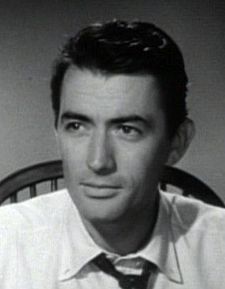 On this day in 2003, Academy Award winning actor Gregory Peck died at his home in Los Angeles from bronchopneumonia at the age of 87. Born Eldred Gregory Peck on 5 April 1916 in La Jolla, California. My favorite Peck movie roles include: as John Ballantyne in Alfred Hitchcock’s Spellbound (1945) with Ingrid Bergman; as Harry Street in The Snows of Kilimanjaro (1952) based on the Ernest Hemingway short story of the same title, with Ava Gardner; as Joe Bradley in William Wyler’s Roman Holiday (1953) with Audrey Hepburn; as James McKay in Wyler’s The Big Country (1958) with Jean Simmons and Charlton Heston; as Sam Bowden in Cape Fear (1962) based on John D. McDonald’s novel The Executioners, with Robert Mitchum; as Atticus Finch in To Kill a Mockingbird (1962) based on the Harper Lee novel of the same name, with Robert Duvall. Peck was married twice; Greta Kukkonen (1942-1955 divorce) and Veronique Passani (1955-2003 his death).
On this day in 2003, Academy Award winning actor Gregory Peck died at his home in Los Angeles from bronchopneumonia at the age of 87. Born Eldred Gregory Peck on 5 April 1916 in La Jolla, California. My favorite Peck movie roles include: as John Ballantyne in Alfred Hitchcock’s Spellbound (1945) with Ingrid Bergman; as Harry Street in The Snows of Kilimanjaro (1952) based on the Ernest Hemingway short story of the same title, with Ava Gardner; as Joe Bradley in William Wyler’s Roman Holiday (1953) with Audrey Hepburn; as James McKay in Wyler’s The Big Country (1958) with Jean Simmons and Charlton Heston; as Sam Bowden in Cape Fear (1962) based on John D. McDonald’s novel The Executioners, with Robert Mitchum; as Atticus Finch in To Kill a Mockingbird (1962) based on the Harper Lee novel of the same name, with Robert Duvall. Peck was married twice; Greta Kukkonen (1942-1955 divorce) and Veronique Passani (1955-2003 his death).
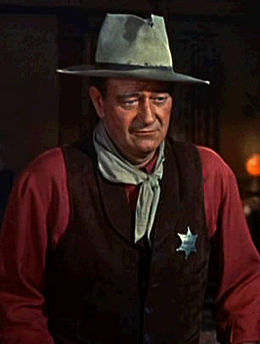
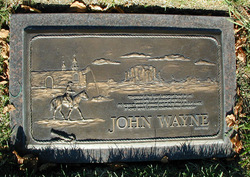

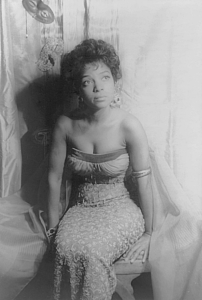
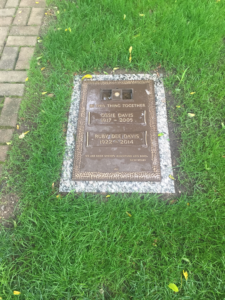
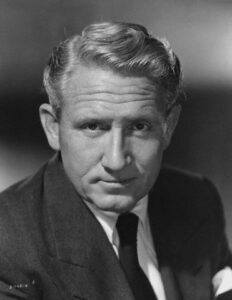
 The Final Footprint – A Requiem Mass was held for Tracy on June 12 at the Immaculate Heart of Mary Catholic Church in East Hollywood. Active pallbearers included George Cukor, Stanley Kramer, Frank Sinatra, James Stewart and John Ford. Out of consideration for Tracy’s family, Hepburn did not attend the funeral. Tracy was interred in Forest Lawn Memorial Park in Glendale, California. Other notable Final Footprints at Forest Lawn Glendale include; L. Frank Baum, Humphrey Bogart, Lon Chaney, Nat King Cole, Dorothy Dandridge, Sammy Davis, Jr., Jean Harlow, Sam Cooke, Walt Disney, Errol Flynn, Clark Gable, Michael Jackson, Louis L’Amour, Carole Lombard, Tom Mix, Casey Stengel, Jimmy Stewart, and Elizabeth Taylor.
The Final Footprint – A Requiem Mass was held for Tracy on June 12 at the Immaculate Heart of Mary Catholic Church in East Hollywood. Active pallbearers included George Cukor, Stanley Kramer, Frank Sinatra, James Stewart and John Ford. Out of consideration for Tracy’s family, Hepburn did not attend the funeral. Tracy was interred in Forest Lawn Memorial Park in Glendale, California. Other notable Final Footprints at Forest Lawn Glendale include; L. Frank Baum, Humphrey Bogart, Lon Chaney, Nat King Cole, Dorothy Dandridge, Sammy Davis, Jr., Jean Harlow, Sam Cooke, Walt Disney, Errol Flynn, Clark Gable, Michael Jackson, Louis L’Amour, Carole Lombard, Tom Mix, Casey Stengel, Jimmy Stewart, and Elizabeth Taylor.
